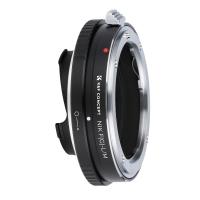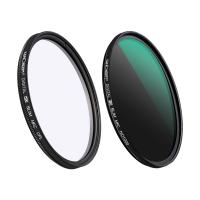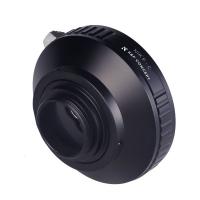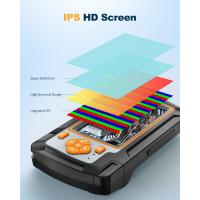What Is A Sem Microscope Used For ?
A scanning electron microscope (SEM) is used for high-resolution imaging of the surface of a sample. It uses a focused beam of electrons to scan the surface of the sample, and the interaction between the electrons and the sample produces various signals that can be detected and used to create an image. SEM is commonly used in materials science, biology, geology, and other fields to study the morphology, composition, and topography of samples at a very fine scale. It allows researchers to visualize and analyze the surface features of a wide range of materials, including metals, ceramics, polymers, biological specimens, and geological samples. SEM can provide detailed information about the sample's structure, surface roughness, elemental composition, and even chemical mapping.
1、 High-resolution imaging of small biological specimens.
A scanning electron microscope (SEM) is a powerful tool used for high-resolution imaging of small biological specimens. It utilizes a beam of electrons to scan the surface of a sample, providing detailed information about its topography and composition. SEMs have revolutionized the field of microscopy by allowing scientists to visualize structures at a much higher resolution than traditional light microscopes.
One of the primary applications of SEM in biology is the study of cell morphology. By using SEM, researchers can examine the surface features of cells, such as the shape, size, and texture of cell membranes. This information is crucial for understanding cellular processes and functions. Additionally, SEM can be used to investigate the ultrastructure of tissues and organs, providing insights into their organization and function.
Moreover, SEM is widely used in the field of nanotechnology. It allows scientists to visualize and manipulate nanoscale structures, such as nanoparticles and nanofibers. This is particularly important in the development of new materials and drug delivery systems, where understanding the surface properties and interactions at the nanoscale is crucial.
In recent years, there have been advancements in SEM technology that have further enhanced its capabilities. For example, the introduction of environmental SEMs allows for imaging of samples in their natural, hydrated state, providing a more realistic representation of biological structures. Additionally, the integration of energy-dispersive X-ray spectroscopy (EDS) with SEM enables elemental analysis of samples, providing valuable information about their chemical composition.
In conclusion, SEM is a versatile tool that is extensively used for high-resolution imaging of small biological specimens. Its applications range from studying cell morphology to investigating nanoscale structures. With ongoing advancements in technology, SEM continues to play a crucial role in advancing our understanding of the microscopic world.

2、 Observing the surface topography of materials at nanoscale.
A scanning electron microscope (SEM) is a powerful tool used for observing the surface topography of materials at the nanoscale. It utilizes a beam of electrons to scan the surface of a sample, providing detailed information about its morphology, structure, and composition.
The primary function of an SEM is to generate high-resolution images of the sample surface. By scanning the electron beam across the sample, it can create a magnified image that reveals the fine details of the material's surface features. This allows researchers to study the surface morphology of various materials, such as metals, ceramics, polymers, and biological samples, with exceptional clarity and precision.
In addition to imaging, SEMs also enable elemental analysis through energy-dispersive X-ray spectroscopy (EDS). EDS is a technique that detects and analyzes the characteristic X-rays emitted by the sample when it is bombarded with the electron beam. This provides valuable information about the elemental composition and distribution within the material.
Moreover, SEMs can be equipped with various accessories and techniques to enhance their capabilities. For example, environmental SEMs (ESEM) allow imaging of samples in a controlled environment, such as in the presence of water vapor or gases. This enables the study of dynamic processes, such as wetting, drying, or chemical reactions, on the sample surface.
Furthermore, recent advancements in SEM technology have led to the development of advanced imaging modes, such as scanning transmission electron microscopy (STEM) and focused ion beam (FIB) microscopy. STEM combines the imaging capabilities of SEM with the high-resolution imaging and analytical capabilities of transmission electron microscopy (TEM). FIB microscopy, on the other hand, utilizes a beam of ions instead of electrons to image and manipulate the sample surface, allowing for precise material removal or deposition.
In summary, SEMs are essential tools for observing the surface topography of materials at the nanoscale. They provide detailed images and valuable information about the morphology, structure, and composition of various materials, aiding in a wide range of scientific and technological research fields.

3、 Analyzing the elemental composition of samples.
A scanning electron microscope (SEM) is a powerful tool used in various scientific fields for analyzing the elemental composition of samples. It provides high-resolution images and detailed information about the surface of a sample by using a focused beam of electrons.
One of the primary applications of SEM is in materials science and engineering. It allows researchers to examine the microstructure of materials, such as metals, ceramics, and polymers, at a very high magnification. By analyzing the elemental composition of these materials, scientists can gain insights into their properties, performance, and behavior. This information is crucial for developing new materials with enhanced properties or improving existing ones.
In addition to materials science, SEM is extensively used in the field of nanotechnology. With its ability to image and analyze nanoscale structures, SEM plays a vital role in characterizing nanoparticles, nanowires, and other nanomaterials. This helps researchers understand their size, shape, and elemental composition, which is essential for designing and optimizing nanoscale devices and technologies.
Moreover, SEM is also employed in the field of life sciences. Biologists and medical researchers use SEM to study biological samples, such as cells, tissues, and microorganisms. By visualizing the surface morphology and elemental composition of these samples, scientists can gain valuable insights into their structure and function. This knowledge is crucial for advancing our understanding of biological processes and developing new treatments for diseases.
In recent years, there have been advancements in SEM technology, such as the incorporation of energy-dispersive X-ray spectroscopy (EDS) detectors. These detectors allow for simultaneous imaging and elemental analysis, providing researchers with even more comprehensive information about the samples they are studying. This integration of imaging and elemental analysis capabilities has further expanded the applications of SEM in various scientific disciplines.
In conclusion, a scanning electron microscope is primarily used for analyzing the elemental composition of samples. Its high-resolution imaging capabilities and ability to provide detailed information about the surface of materials make it an invaluable tool in materials science, nanotechnology, and life sciences. With advancements in technology, SEM continues to evolve and contribute to our understanding of the world at the micro and nanoscale.

4、 Characterizing the morphology and structure of nanoparticles.
A scanning electron microscope (SEM) is a powerful tool used for characterizing the morphology and structure of nanoparticles. It provides high-resolution images and detailed information about the surface topography, size, shape, and composition of nanoparticles.
Nanoparticles are materials with dimensions in the nanometer range, typically between 1 and 100 nanometers. Due to their small size, nanoparticles often exhibit unique properties and behaviors that differ from their bulk counterparts. Understanding the morphology and structure of nanoparticles is crucial for various fields, including materials science, nanotechnology, chemistry, and biology.
SEM works by scanning a focused beam of electrons across the surface of a sample. When the electrons interact with the sample, various signals are generated, including secondary electrons, backscattered electrons, and characteristic X-rays. These signals are then detected and used to create an image of the sample's surface.
By using SEM, researchers can obtain high-resolution images of nanoparticles, allowing them to visualize their size, shape, and surface features. This information is essential for understanding the physical and chemical properties of nanoparticles and how they interact with their surroundings.
Moreover, SEM can also provide elemental analysis of nanoparticles through energy-dispersive X-ray spectroscopy (EDS). EDS allows researchers to identify the chemical composition of nanoparticles and map the distribution of different elements within the sample.
In recent years, there has been a growing interest in studying nanoparticles for various applications, such as drug delivery, catalysis, electronics, and environmental remediation. SEM plays a crucial role in characterizing and understanding the morphology and structure of nanoparticles, enabling researchers to design and optimize their properties for specific applications.
Furthermore, advancements in SEM technology, such as the development of field emission SEMs and environmental SEMs, have expanded the capabilities of nanoparticle characterization. These advancements allow for higher resolution imaging, in situ observations, and the study of nanoparticles under realistic conditions.
In conclusion, a scanning electron microscope is used for characterizing the morphology and structure of nanoparticles. It provides high-resolution imaging and elemental analysis, allowing researchers to understand the physical and chemical properties of nanoparticles and optimize their performance for various applications. The latest advancements in SEM technology have further enhanced the capabilities of nanoparticle characterization, enabling researchers to delve deeper into the world of nanomaterials.
































There are no comments for this blog.